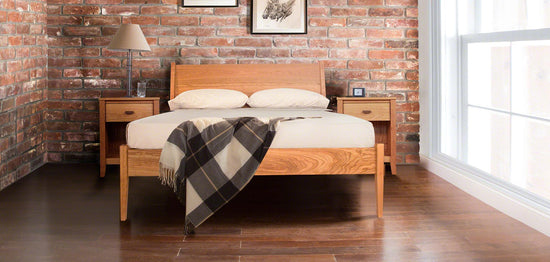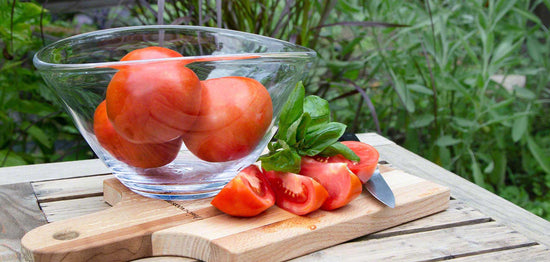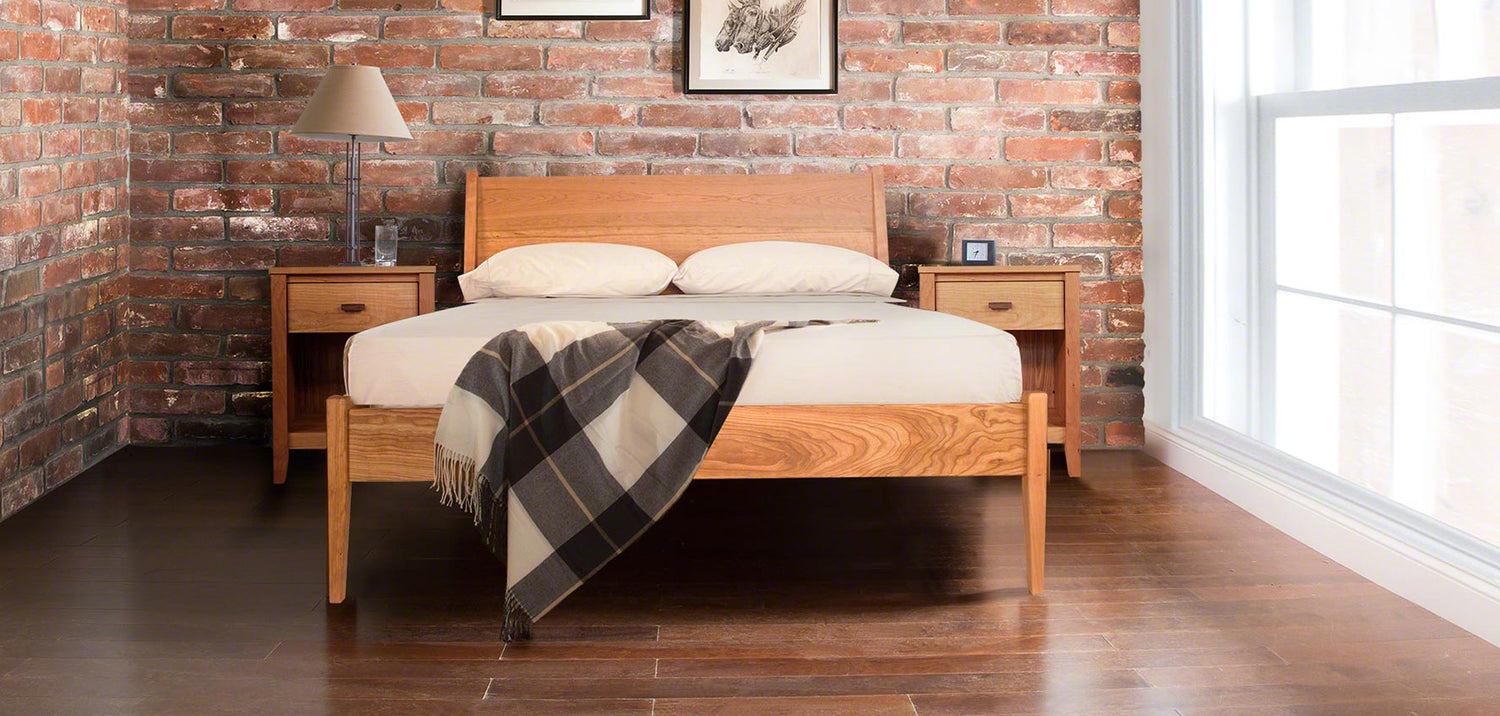Tung Oil
Tung oil is a plant-based oil used as a wood finish. It is clear, quick-drying, and penetrates the grain to enhance and protect the wood. It’s one of the oldest and most popular wood finishes in the world and is derived from the seeds of the tung tree in Eastern Asia. Tung oil has become a staple among fine furniture craftsmen in the United States and beyond. It is eco-friendly, non-toxic, and food-safe.
Vermont Furniture Designs uses tung oil on maple furniture as an alternative to linseed oil. Due to the dense grain of maple, linseed oil doesn’t penetrate well and can result in a blotchy appearance. Tung oil has no issues penetrating the dense maple grain, and because it dries clear, it’s a great finish for lighter colored woods. Tung oil is available as a finish on cherry and walnut, as well, upon request.
Similarly to linseed oil, it is difficult to find furniture that is made with raw or 100% pure tung oil. Many craftsmen will use boiled or polymerized tung oil, and it’s also common for manufacturers to mislabel products as tung oil when they’re not. If you’re interested in a tung oil finish, it’s worth doing a bit of digging to understand exactly what finish is being used and what it’s comprised of.
Note: You'll have to contact us to request a tung oil finish, unless you're ordering maple furniture from Vermont Furniture Designs, in which case tung oil is the standard finish.
Pros & Cons of Tung Oil as a Wood Finish
There are many reasons a craftsman might consider using tung oil to finish wood furniture. It’s all natural, non-toxic, and eco-friendly, and it doesn’t yellow as much over time as common finishes like linseed oil, nitrocellulose lacquer, or varnishes like polyurethane. On the other hand, tung oil is expensive and susceptible to water rings, stains, and scratches.
-
Pros
- Zero VOCs (pure tung oil)
- All Natural, non-toxic and eco-friendly
- Food safe
- Doesn’t yellow over time
- Easy to apply
- Easy to repair dents and scratches
- Mildly water resistant
-
Cons
- Susceptible to water damage and stains (although more resistant to liquids than linseed oil)
- Susceptible to scratches (although more durable than linseed oil)
- Cost is typically higher than linseed oil.
- Typically requires up to 5 coats to produce a more pleasing satin sheen
Tung Oil FAQ's
Is Tung Oil Eco-Friendly/Non-Toxic/Food-Safe?
Is Tung Oil Eco-Friendly/Non-Toxic/Food-Safe?
Yes. In its purest form, tung oil is completely non-toxic, eco-friendly, and food-safe. That said, many of the finishes sold under the “tung oil” label are not pure tung oil.
Which Of Our Craftsmen Use Tung Oil?
Which Of Our Craftsmen Use Tung Oil?
Currently, Vermont Furniture Designs is our only craftsmen that offers tung oil as a wood finish. Learn more about VFD construction details.
Is Tung Oil Waterproof?
Is Tung Oil Waterproof?
Although tung oil doesn't offer the kind of water resistance that you'd find with a lacquer, varnish, or urethane, it is more water resistant than other oil finishes like linseed oil.
Can Tung Oil Be Used on Cutting Boards?
Can Tung Oil Be Used on Cutting Boards?
Yes– tung oil is an extremely popular finish for wood cutting boards and wood kitchen products. It is non-toxic and food friendly.
How Do You Maintain a Tung Oil Finish?
How Do You Maintain a Tung Oil Finish?
Re-oiling when the finish appears dry, which will be dependant on the type of wood, temperature and humidity. Scratches and dents can be sanded out with a piece of high grit sandpaper or steel wool. Learn more about caring for your furniture.
Is Tung Oil a Good Finish for Wood Furniture?
Is Tung Oil a Good Finish for Wood Furniture?
Tung oil is a great finish for those looking for a close-to-the-grain look and the ability to feel the texture of the wood. In this case, a hard finish like a lacquer or varnish would be a poor choice. It’s also eco-friendly, food-safe, and non-toxic, and it won't turn yellow as it ages.
Read More on the Blog
-
5 of the Best Oil Finishes for Wood Furniture
Read MoreOil finishes are eco-friendly, food-safe, and non-toxic. They're also easy to repair and produce a more textured grain pattern than many alternatives.
-
Linseed Oil vs Tung Oil: What's the Difference?
Read MoreBoth linseed oil and tung oil– in their purest forms– are non-toxic, eco-friendly, and food-safe.
-
Common Wood Finishes for Furniture & Flooring
Read MoreThere are lots of options for finishing wood, but when it comes to furniture and flooring, most products fall into one of these five categories.
-
Raw vs Boiled vs Polymerized Linseed Oil
Read MoreRaw linseed oil is the purest form, but is sometimes impractical as a furniture finish due to the extended drying times
-
What is Boiled Linseed Oil?
Read MoreThe difference between raw linseed oil and boiled linseed oil is that there are drying agents added to BLO to shorten the time it takes for the oil to cure.
Other Types of Wood Finishes
-

Linseed Oil
More About Linseed Oil -

Mineral Oil
More About Mineral Oil -

Lacquer
More About Lacquer




